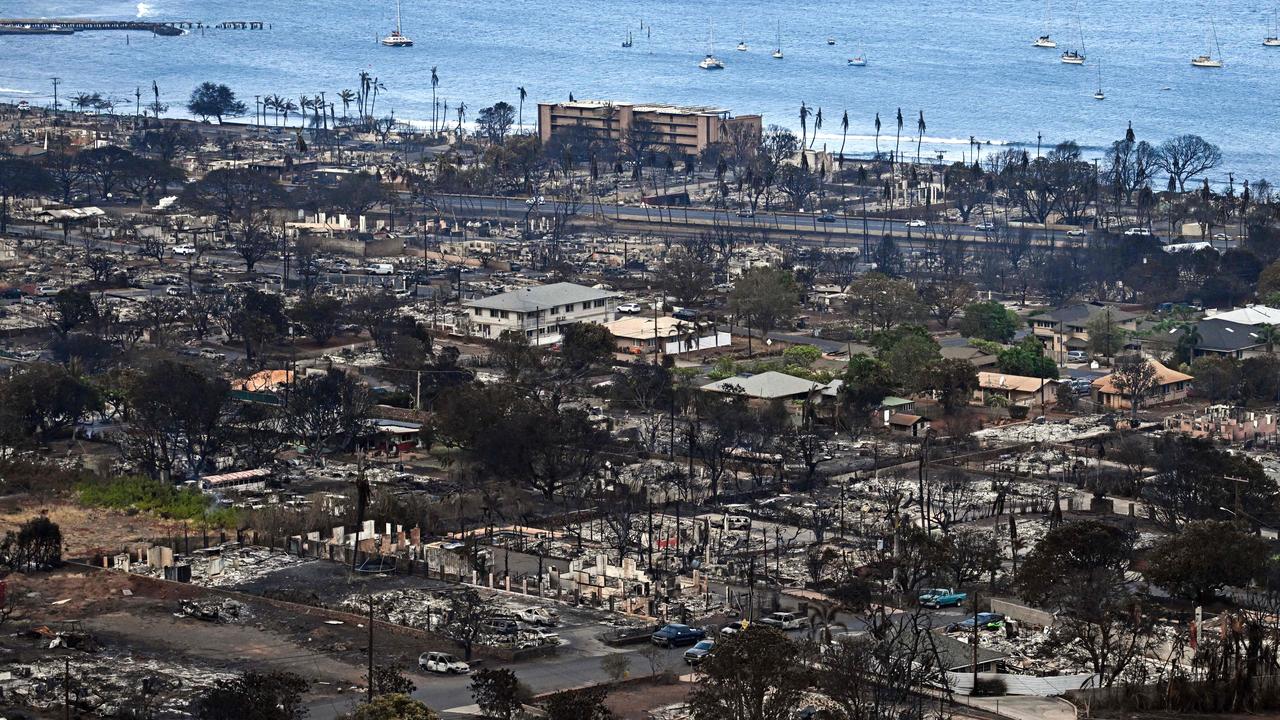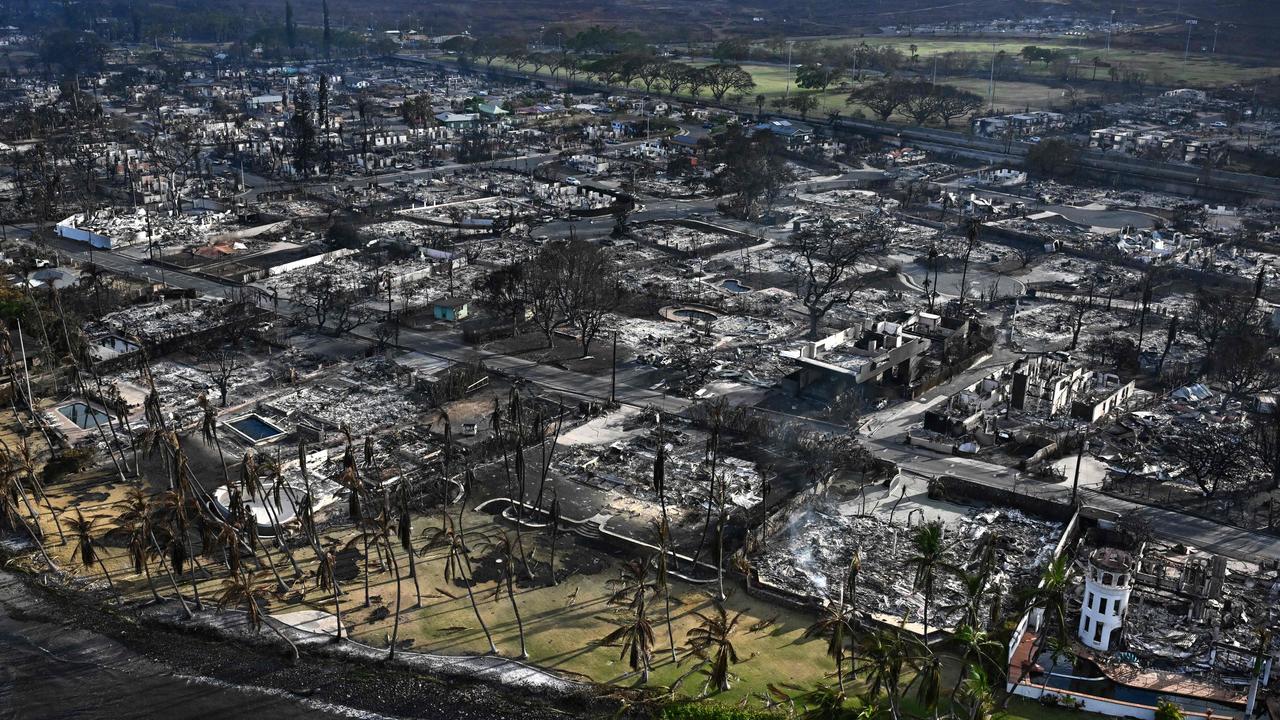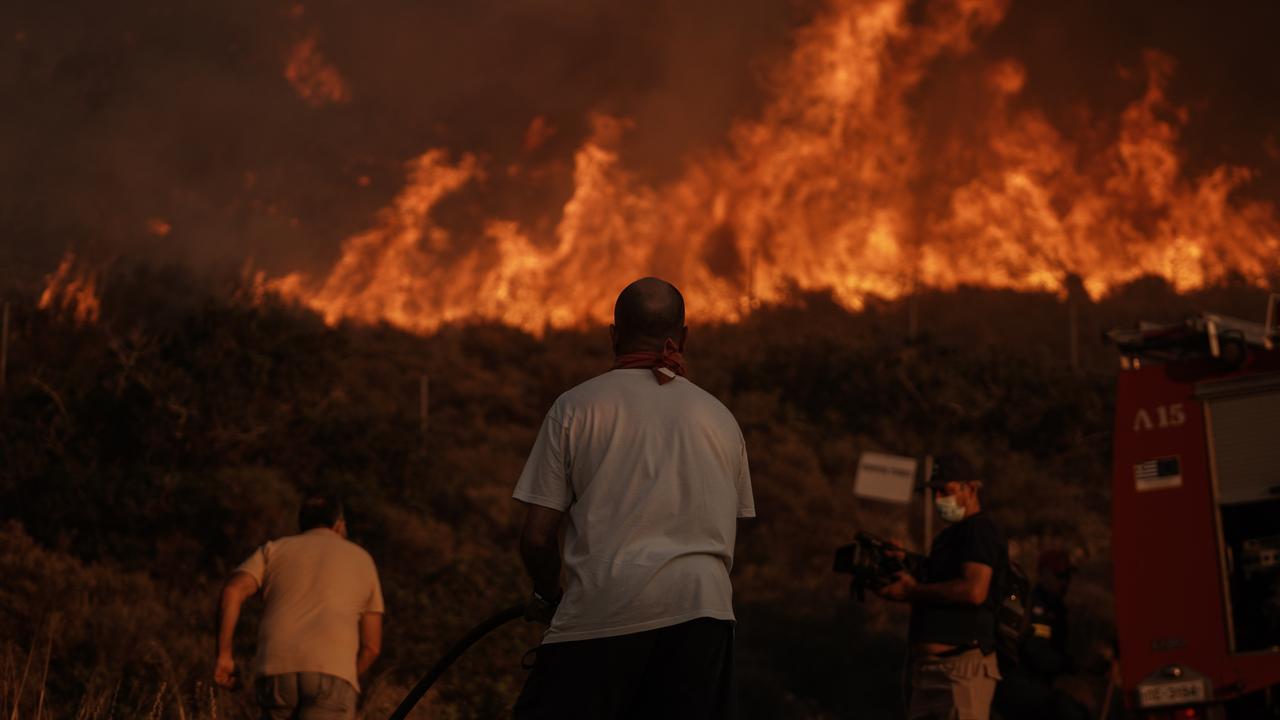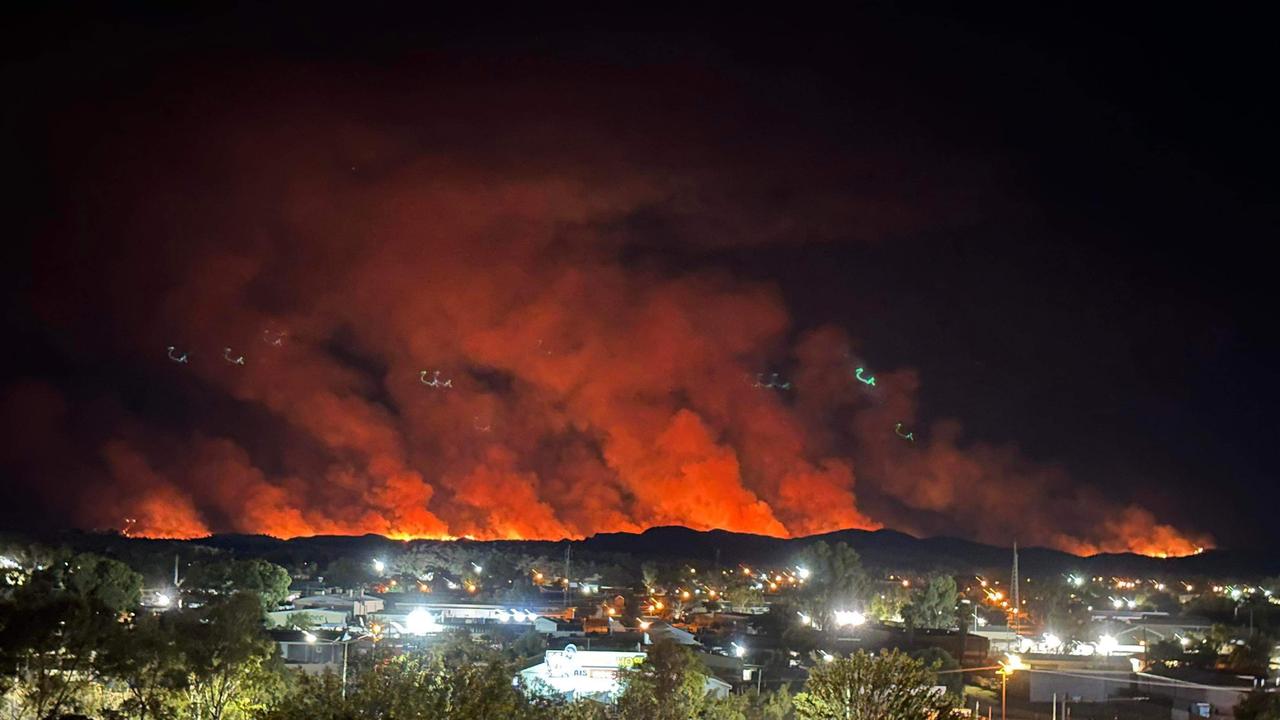Hawaii’s deadly wildfire is a bad sign of what is coming to Australia, fire scientist warns
An Australian fire expert has warned the deadly blaze that turned a Hawaiian town to ash is an ominous sign of what is coming for us this summer.
Australia is running head-first into a devastating bushfire season, says a Tasmanian fire expert who warns the “diabolical” blaze that turned a Hawaiian town to ash is an ominous sign of what is coming for us this summer.
At least 99 people have died after a fast-moving fire engulfed the historical resort town of Lahaina on Maui last week, melting cars, crumbling buildings, and forcing people into the ocean to escape the flames.
It is the deadliest blaze in Hawaii’s history, and the deadliest US wildfire in more than a century; and authorities fear the death toll will rise as hundreds more people remain unaccounted for.

University of Tasmania professor of pyrogeography and fire science David Bowman told news.com.au there are lessons to take from the deadly blaze as Australia barrels toward its own dangerous summer.
“As that diabolical situation in Hawaii unfolds, we see this could’ve happened here,” Professor Bowman said.
“That thing escalated very quickly. And hindsight is very useful now, but when you’ve got strong wind speeds and that high fuel – the people were just overrun.”
He said part of the issue was where and when the fire sparked: in a laid-back holiday town during summer holiday season.
Professor said the dry vegetation and strong winds fuelled the fire, and the people in the resort town had to go from “holiday mode to survival mode in seconds”.
“If you’ve got these particularly fast and unexpected fires – and this was very fast and furious – that overwhelms people and can contribute to the high casualty rate.”

Alarmingly, Hawaii is not the only northern hemisphere holiday destination to be scorched by fires in recent weeks, with tourism hot spots in Greece, Spain and Portugal going up in smoke, too.
Canada has been dealing with its own Black Summer this year, too, with fires burning across more than 12 million hectares of land – more than the size of Cuba or South Korea. The blaze spewed smoke across North America – even blanketing New York City in smog.
The northern hemisphere blazes have been fuelled by record-high summer temperatures, which pushed global average temperatures to new extremes in July even below the Equator, where Australians experienced an unusually warm, dry midwinter.

During all this, global meteorology authorities declared a hotter, drier El Nino weather pattern had arrived for the first time since 2016 after consecutive La Nina events.
The declaration had Australian scientists fearing that the upcoming bushfire season would be a “horror”.
The Bureau of Meteorology has already declared the fire season is “under way” in Queensland, with the state warned that temperatures were “several degrees above average” this week.
Fire season is getting underway with warm, dry weather across most of Qld this week. Maximum temperatures will be several degrees above average for many locations for the next few days. Brisbane hit 29.1C yesterday - its warmest August day since 2018 and similar forecast today. pic.twitter.com/y5pKo9pc10
— Bureau of Meteorology, Queensland (@BOM_Qld) August 13, 2023
Meanwhile, massive fires have already scorched the Northern Territory in what authorities warn is “only the start” of a potential horror bushfire season.
Bushfires NT chief fire control officer Tony Fuller warned that 80 per cent of the Territory could go up in flames by March with the current fuel loads reaching 50-year highs.
“It’s what’s called a decadal event where there’s a build-up of fuel,” Mr Fuller said, NT News reports.
“This season we’ve had extra rain just before the season and that’s just added to our fuel load.
“A lot of the areas we’re burnt previously are starting to regrow already, buffel grass really quickly re-establishes itself.”
The Top End is currently in the middle of its fire season, ending in November, with Central Australia’s fire season to officially begin in October.

Yet, despite not being in season, a fire has burned at the doorstep of Alice Springs as recently as this week after a planned fuel reduction burn by Parks and Wildlife NT in Tjoritja West MacDonnell National Park on Friday “got away” from authorities and spread through the night.
Professor Bowman said Australians need only look to the bush to see the landscape was “priming itself to burn”.
“Look at what the dams are doing, ponds, creeks, what the bush is doing. In any part of the world it’s drying up. And that means, already, it’s really priming itself to burn,” he said.
“Clutching to weather is a bit irrelevant, we need to get situational awareness, that’s what is going to save your life.
“And as the summer comes if we pull these heavy heatwaves, these flammable landscapes become extraordinarily hazardous particularly if they haven’t been well managed.”
Continue the conversation – georgina.noack@news.com.au





